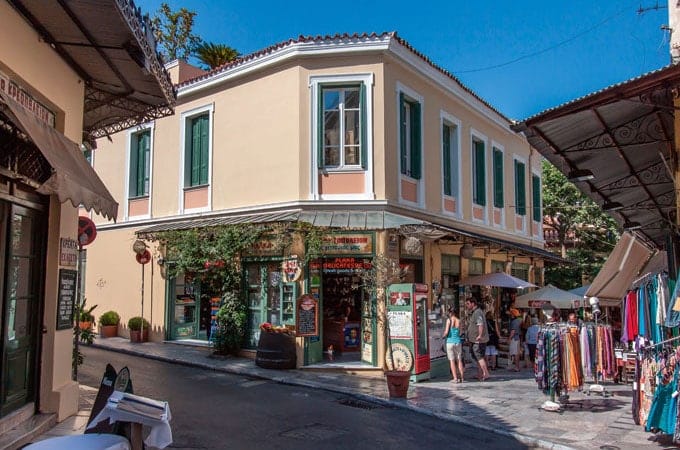Italy is famous for its iconic landmarks, which draw in countless tourists every year. From ancient ruins to stunning churches and architectural marvels, Italy offers a wealth of historical and natural attractions that leave visitors in awe. But Italy’s beauty doesn’t stop at its human creations; it also boasts stunning natural wonders that are equally fascinating. Whether you’re a history buff or simply appreciate breathtaking sights, these 37 famous Italian landmarks should definitely be on your list when planning your vacation to Italy.
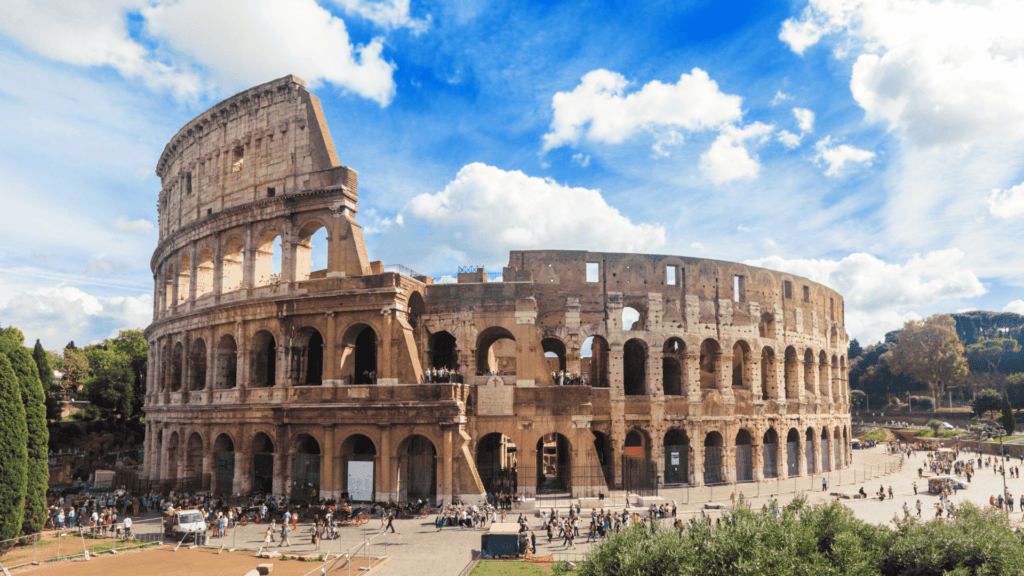
1. Colosseum, Rome
The Colosseum in Rome is one of Italy’s most iconic landmarks and a must-visit for any traveller. This ancient amphitheatre, built in the 1st century AD, was used for gladiatorial contests, animal hunts, and other public spectacles. Today, it stands as a symbol of Rome’s rich history and architectural prowess.
Visitors can explore the Colosseum’s impressive ruins, walk through the underground chambers where gladiators once prepared for battle, and imagine the crowd’s roar as they stand in the centre of the arena. A great time to capture the perfect photo of this magnificent structure is at night when it is beautifully illuminated.
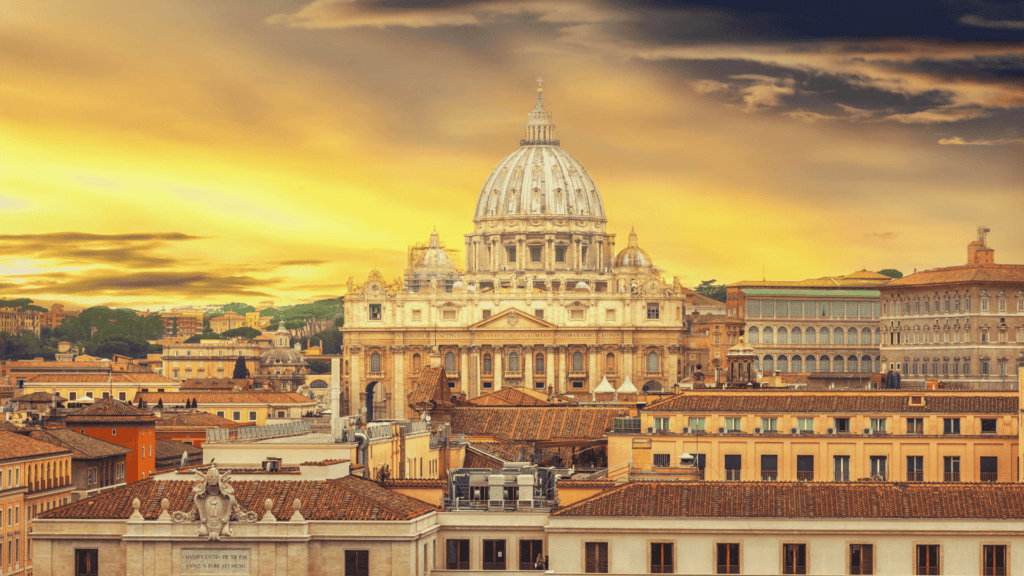
2. Vatican City, Rome
The Vatican City is a must-visit destination for anyone travelling to Italy. As the smallest independent state in the world, it is home to some of the most iconic landmarks in the country.
One of the main attractions in the Vatican City is St. Peter’s Basilica, a stunning Renaissance church that is considered one of the holiest sites in Christianity.
Visitors can explore the grandeur of the basilica, admire its intricate artwork and architecture, and even climb to the top of the dome for breathtaking views of the city.
Another must-see in the Vatican City is the Sistine Chapel, famous for its ceiling painted by Michelangelo. This masterpiece is a testament to the beauty and skill of Renaissance art. Visitors can marvel at the frescoes’ intricate details and soak in this sacred space’s spiritual atmosphere.
A visit to the Vatican City is a truly unforgettable experience that allows you to immerse yourself in Italy’s rich history and culture.
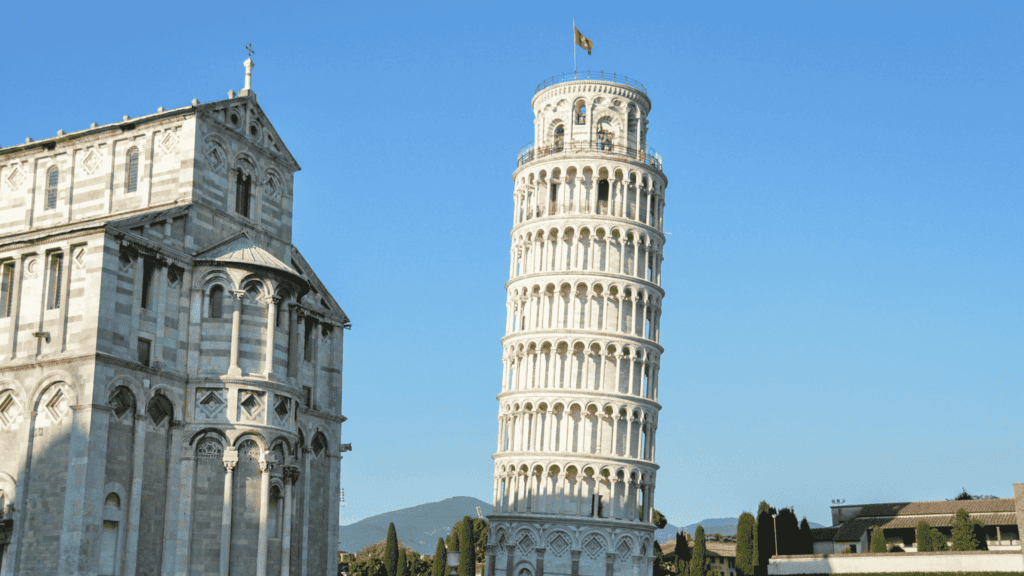
3. Leaning Tower of Pisa, Pisa
The Leaning Tower of Pisa is one of Italy’s most famous landmarks and a marvel of architectural design.
Located in Pisa, this iconic tower is known for its distinctive tilt caused by an unstable foundation. Construction began in 1173 and took nearly 200 years to complete.
The tower’s lean was noticed during construction and has only increased over the years.
Despite its tilt, the tower has stood the test of time and symbolises Italy’s rich history and ingenuity.
Visitors can climb to the top of the tower and enjoy panoramic views of Pisa while also marvelling at its unique architectural feat.
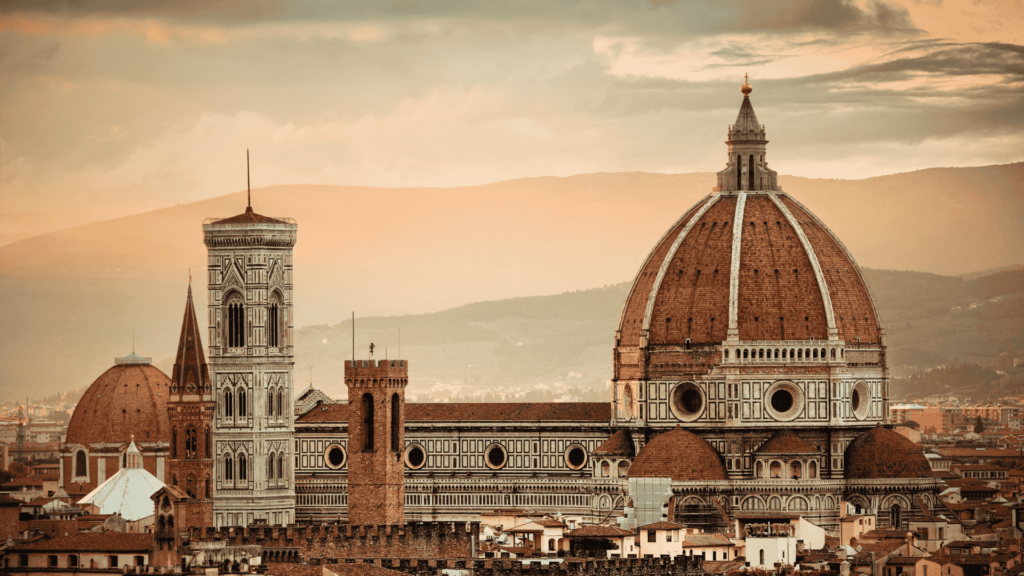
4. Florence Cathedral, Florence
The Florence Cathedral, also known as the Duomo, is one of the most iconic landmarks in Italy.
Located in the heart of Florence, this stunning cathedral is a masterpiece of Gothic architecture. Its famous dome, designed by Filippo Brunelleschi, is a marvel of engineering and is considered one of the giant domes in the world.
Visitors can admire the intricate details of the cathedral’s facade, including its beautiful marble panels and intricate sculptures.
Inside, the cathedral is equally impressive, with its soaring nave, stunning stained glass windows, and ornate frescoes. For those willing to climb the 463 steps to the top of the dome, the reward is breathtaking panoramic views of Florence. You can see the city’s historic centre, the Arno River, and the surrounding Tuscan countryside from the top.
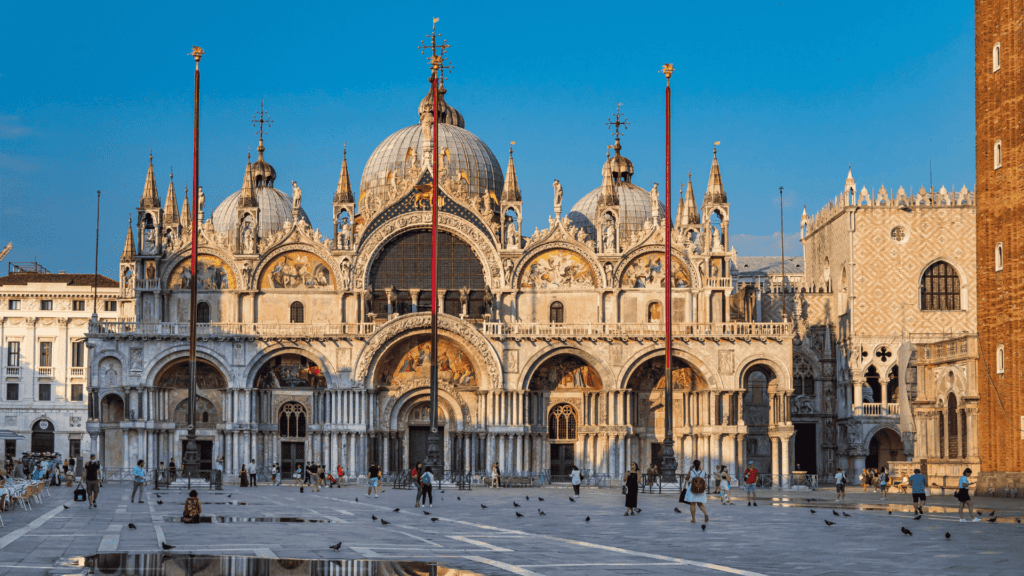
5. St. Mark’s Basilica, Venice
St. Mark’s Basilica is one of the most famous landmarks in Venice, Italy. This stunning basilica is a masterpiece of Byzantine architecture located in St. Mark’s Square.
Inside the basilica, visitors can admire the golden mosaics that cover the walls and ceilings, depicting scenes from the Bible and the life of St. Mark.
The Pala d’Oro, a magnificent altarpiece adorned with precious gems and enamel, is another highlight of the basilica. For those seeking a unique experience, climbing the basilica’s bell tower offers panoramic views of Venice’s canals and rooftops.
Related Article: The Ultimate Travel Guide to Italy for Couples
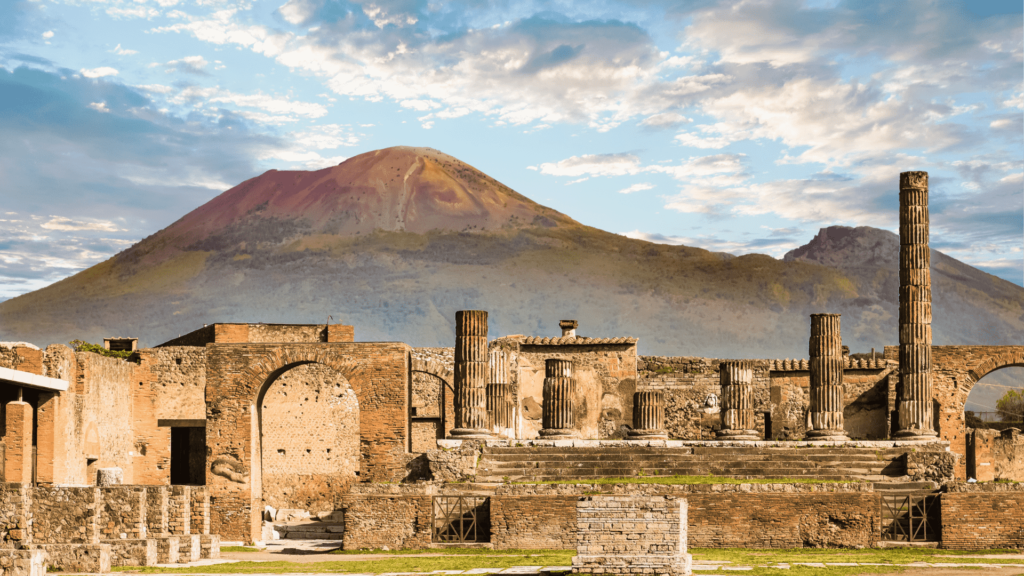
6. Pompeii, Naples
One of the top landmarks in Italy that you can’t miss is Pompeii, located near the city of Naples.
Pompeii is an ancient Roman city buried under volcanic ash and preserved for centuries.
Today, visitors can explore the well-preserved ruins and glimpse what life was like in ancient times.
From the famous Pompeii Amphitheatre to the Villa of the Mysteries, there are countless fascinating sites to discover in Pompeii. While there, be sure also to visit the nearby city of Naples, known for its delicious pizza and vibrant street life.
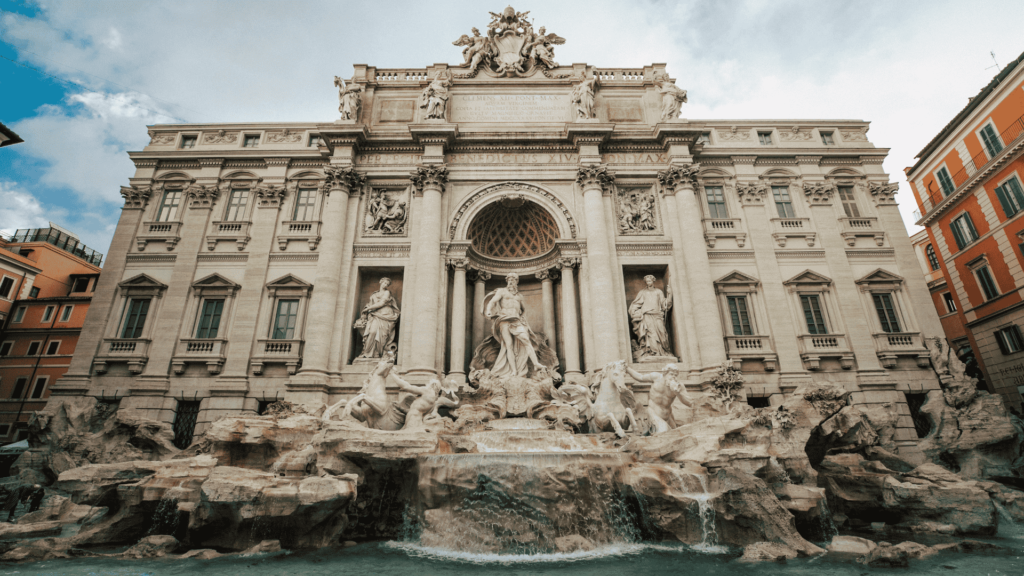
7. Trevi Fountain, Rome
The Trevi Fountain is another iconic landmark in Rome. This stunning Baroque fountain is known for its grandeur and beauty.
Legend has it that if you throw a coin into the fountain, you will ensure your return to Rome. Over 3,000 euros are estimated to be thrown into the fountain daily, making it a popular spot for tourists and locals.
Try to visit the Trevi Fountain at night when it is beautifully lit up, creating a magical atmosphere.
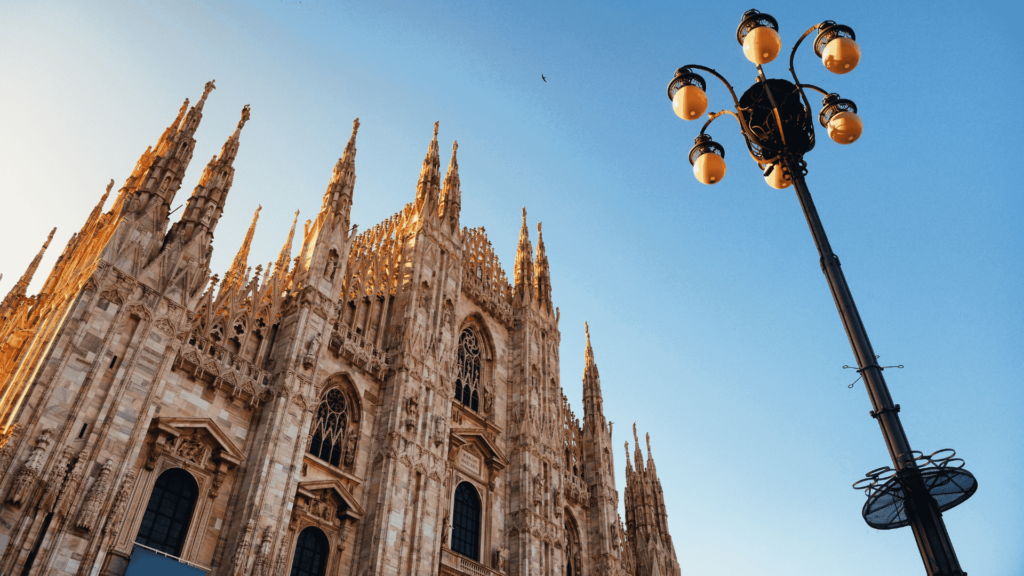
8. Milan Cathedral, Milan
The Milan Cathedral, also known as the Duomo di Milano, is a breathtaking Gothic cathedral in the heart of Milan. It is considered one of the largest churches in the world and a true masterpiece of architecture.
The cathedral took almost six centuries to complete and is embellished with intricate sculptures, stunning stained glass windows, and towering spires.
Visitors can climb to the rooftop terrace to get a panoramic view of the city or explore the interior to admire the cathedral’s grandeur.
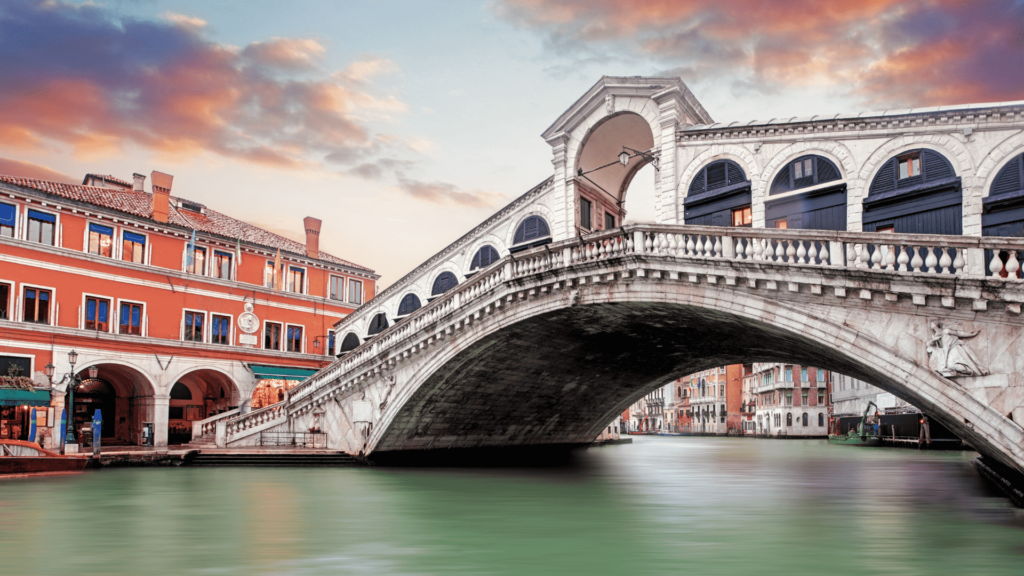
9. Rialto Bridge, Venice
The Rialto Bridge is one of the most iconic landmarks in Venice and perhaps in Italy. It spans across the Grand Canal and is recognised as both the oldest and the most famous bridge in the city.
This magnificent example of Renaissance architecture was built in the late 16th century. As you walk across the bridge, you will find a range of shops and stalls selling various goods, including jewellery, souvenirs, and local delicacies. While strolling the bridge, enjoy the breathtaking views of the canal and the bustling activity below.
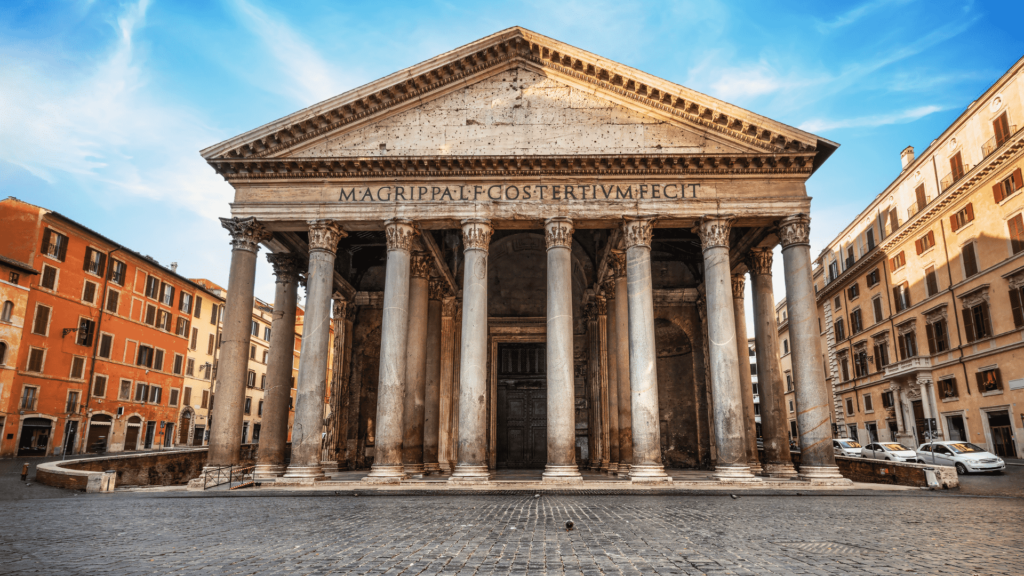
10. Pantheon, Rome
The Pantheon, an ancient Roman temple constructed in 126 AD, is renowned for its spectacular dome, which still holds the title of the world’s largest unreinforced concrete dome.
The interior of the Pantheon is equally stunning, featuring intricate marble flooring, beautiful artwork, and the famous oculus at the apex of the dome, which allows natural light to enter the building.
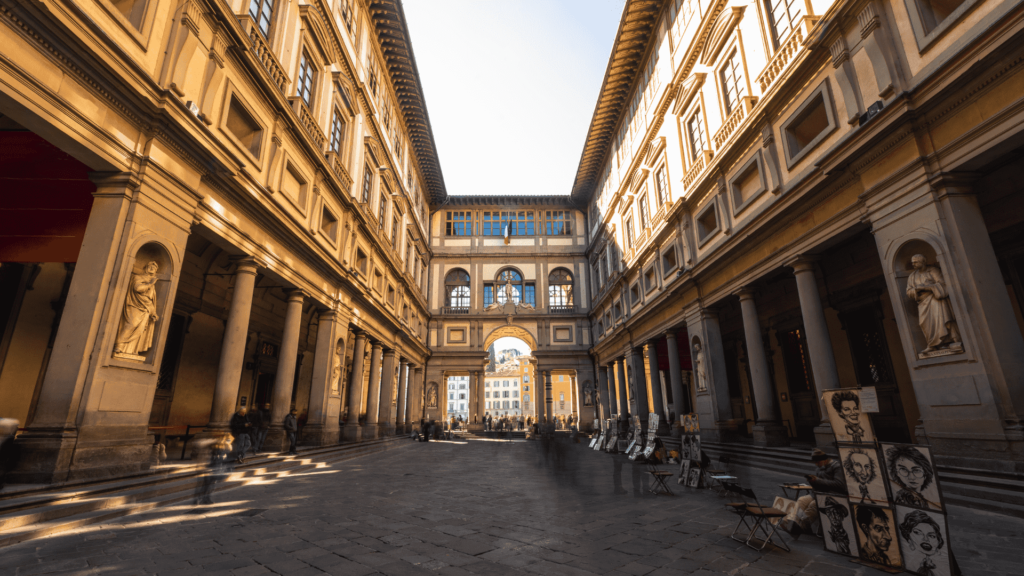
11. Uffizi Gallery, Florence
The Uffizi Gallery in Florence is a must-visit destination for art enthusiasts as it houses a rich collection of Renaissance art. The museum has numerous masterpieces, including works by renowned artists such as Botticelli, Michelangelo, Leonardo da Vinci, and Raphael.
The gallery is in the historic Palazzo degli Uffizi, initially built as a government office in the 16th century. Visitors can explore the gallery’s rooms and appreciate the remarkable art pieces.
From Botticelli’s “The Birth of Venus” to Michelangelo’s “Tondo Doni,” the Uffizi Gallery offers a unique opportunity to immerse oneself in the beauty and history of Italian art.
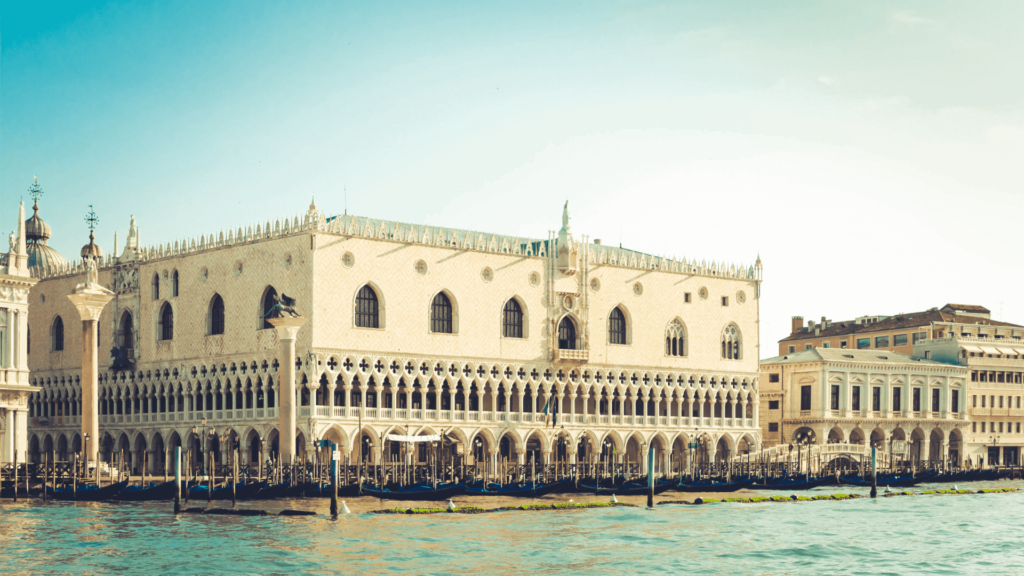
12. Doge’s Palace, Venice
Doge’s Palace is an impressive example of Venetian Gothic architecture and a must-visit landmark in Venice.
It was the Doge’s residence, the Venetian Republic’s highest authority. Visitors can explore the luxurious rooms, admire the intricate artwork, and cross the iconic Bridge of Sighs.
The Palace also hosts the Museo dell’Opera, which exhibits a collection of historical artifacts and artwork. With its stunning views of the Grand Canal, rich history, and culture, Doge’s Palace is a true gem of Venice and will be an essential part of any trip to this romantic city.
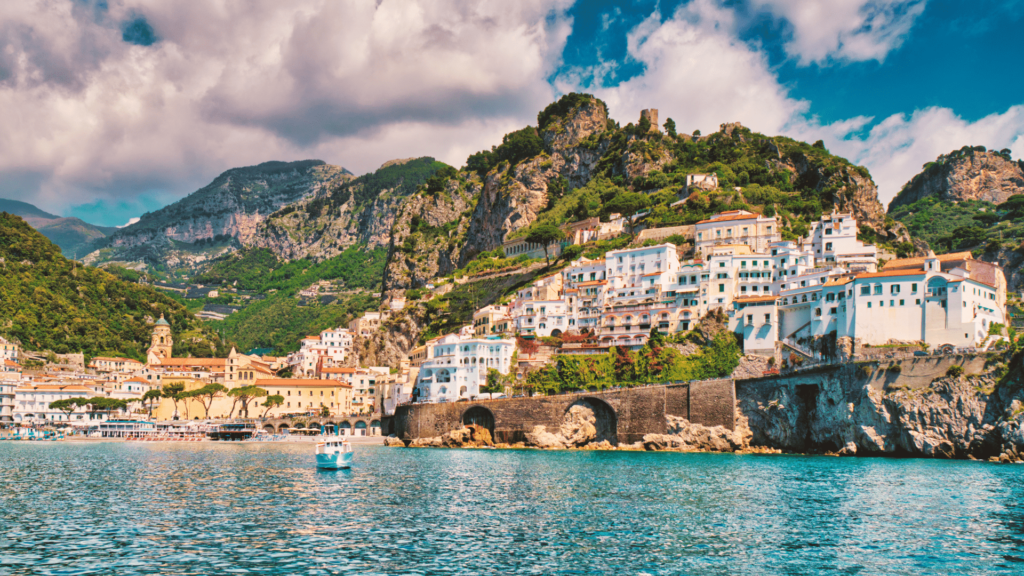
13. Amalfi Coast, Amalfi
The Amalfi Coast is a breathtaking destination in Italy that every traveller should visit.
Located in the Campania region, this stunning coastline stretches about 50 kilometres and is famous for its picturesque towns, colourful cliffside villages, and crystal-clear turquoise waters.
The town of Amalfi itself is a charming and vibrant place, with its narrow streets, beautiful beaches, and stunning views of the Gulf of Naples and the Mediterranean Sea.
Visitors can also explore other towns along the coast, such as the famous seaside town of Positano and the beautiful Ravello, which offers incredible views over the Amalfi coast.
Whether you’re looking to relax on the beach, indulge in delicious Italian cuisine, or explore the rich history and culture of the region, the Amalfi Coast will leave you with indelible memories of your vacation in Italy.
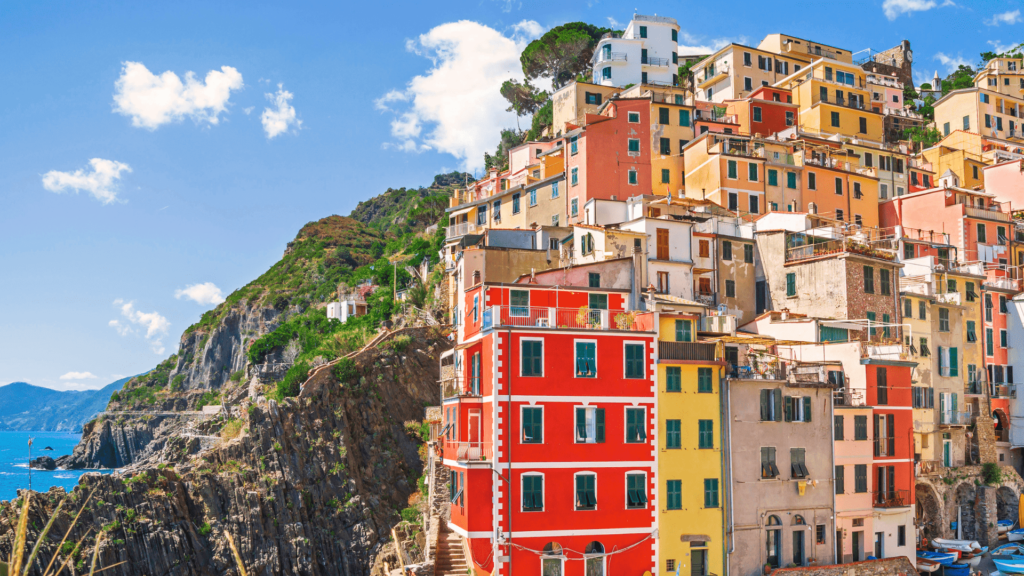
14. Cinque Terre, Liguria
Cinque Terre, located in northwest Italy, is a spectacular region known for its five picturesque villages: Riomaggiore, Manarola, Corniglia, Vernazza, and Monterosso.
Designated as a UNESCO World Heritage Site in 1997, Cinque Terre boasts some of the most breathtaking landscapes in the Mediterranean. The coastline is rugged and steep but features charming coves, beaches, and spectacular hiking trails.
Inland, you’ll discover medieval towns, charming churches, artisan shops, and delectable local cuisine.
The unique aspect of Cinque Terre is the terraced hillsides, where farmers have painstakingly created strips of arable land supported by kilometres of dry stone walls. This distinctive feature has contributed to its status as a World Heritage Site.
Visitors are enchanted by the vibrant and colourful villages, each with its allure, perched on the cliffs overlooking the sea. These small towns have maintained their original character and charm, having existed in relative isolation for many years. The narrow alleyways wind their way up to the vineyards clinging to the steep hillsides, and the clustered houses reflect the architectural style of Genoa, which once ruled over the region.
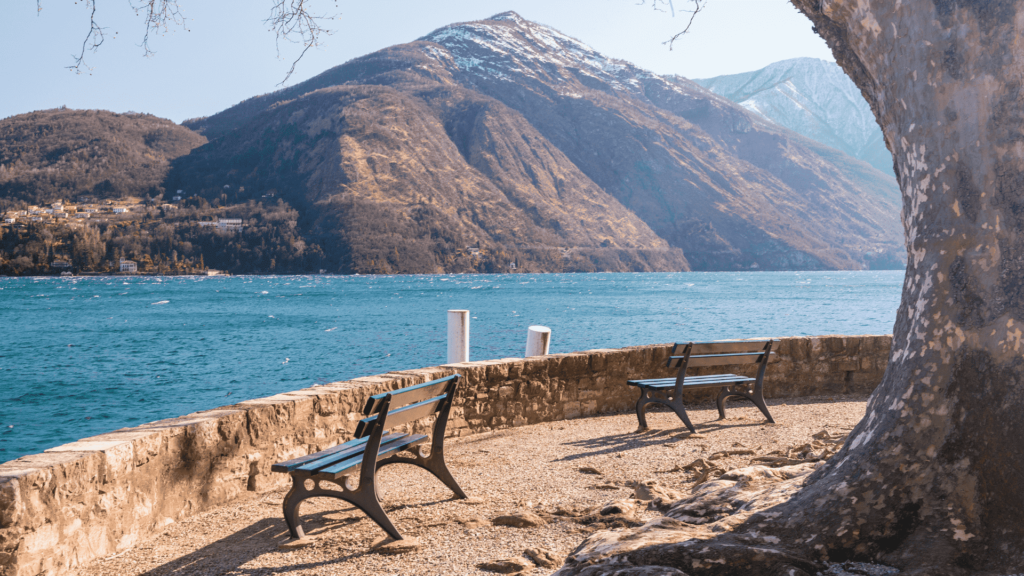
15. Lake Como, Lombardy
Lake Como, located in Northern Italy, is a stunning lake and has been a symbol of glamour and wealth for decades. Its dramatic setting, surrounded by steep mountainsides and snow-dusted Alps, adds to its allure.
Along the lakeshore, you’ll find palm trees and ornate villas, some dating back to the 16th century.
The proximity to Milan, less than an hour away, and the patronage of the fashion crowd have also contributed to Lake Como’s reputation. However, the association with glamour and wealth is mainly due to George Clooney, who purchased a lakeside villa here and brought his Hollywood friends along.
Despite this, Lake Como has a rich history that predates its modern image. Celtic tribes once inhabited the area until the Romans arrived and established the first Roman city at Como. The wealthy Lombards of nearby Milan later settled here in the 16th century, building fortunes based on the thriving silk industry.
Today, Lake Como continues to be a source of silk for renowned fashion brands like Versace, Hermes, and Ralph Lauren and rightfully has a place on Italy’s most iconic landmarks list.
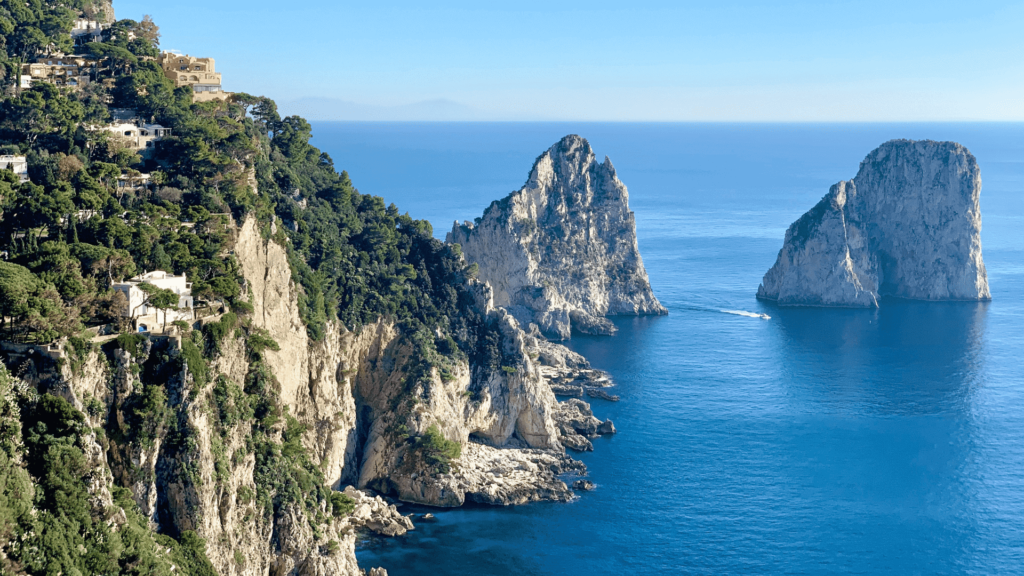
16. Capri, Bay of Naples
Located in the Bay of Naples, Capri Island is renowned for its stunning natural beauty and has attracted visitors for centuries.
Capri and Anacapri are two picturesque towns on an Italian island that have become exclusive travel destinations. The island is famous for its dramatic coastline views and luxurious villas, attracting glamorous celebrities and jet-setters. Visitors can also enjoy elegant shops in Capri and Anacapri.
However, Capri also offers affordable attractions, such as breathtaking natural vistas, well-maintained gardens, and secluded hiking trails. For those willing to splurge, plenty of high-end shopping and dining options are available.
Capri has something to offer everyone, whether you’re a budget traveller or looking for a luxurious experience.
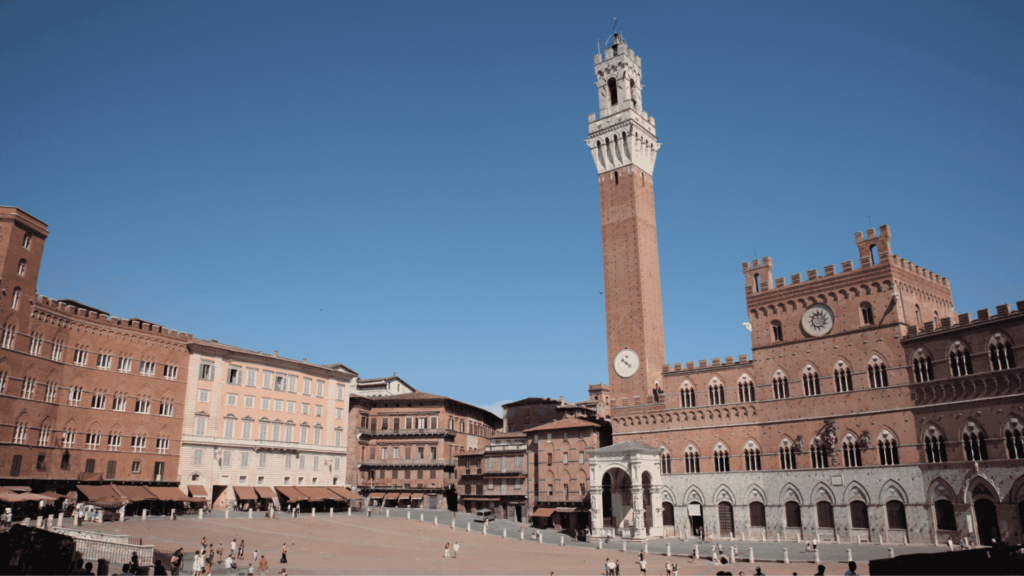
17. Piazza del Campo, Siena
Piazza del Campo, or Il Campo as it is also known, is a renowned medieval square in Siena.
Initially serving as a marketplace and meeting place for nearby villages, the square was given more defined boundaries in the 14th century with its distinctive red-brick pavement arranged in a fishbone pattern.
Today, Il Campo is the focal point for all major festivals and events in Siena, including the Palio horse race held twice a year.
The square is also home to several notable landmarks, such as the Torre del Mangia tower, built in the 14th century, and the Palazzo Pubblico and Civic Museum, which houses a remarkable collection of Sienese School masterpieces.
Visitors can enjoy the shade and delicious food at the cafés and restaurants surrounding the square while also indulging in people-watching opportunities after a day of exploring the city.
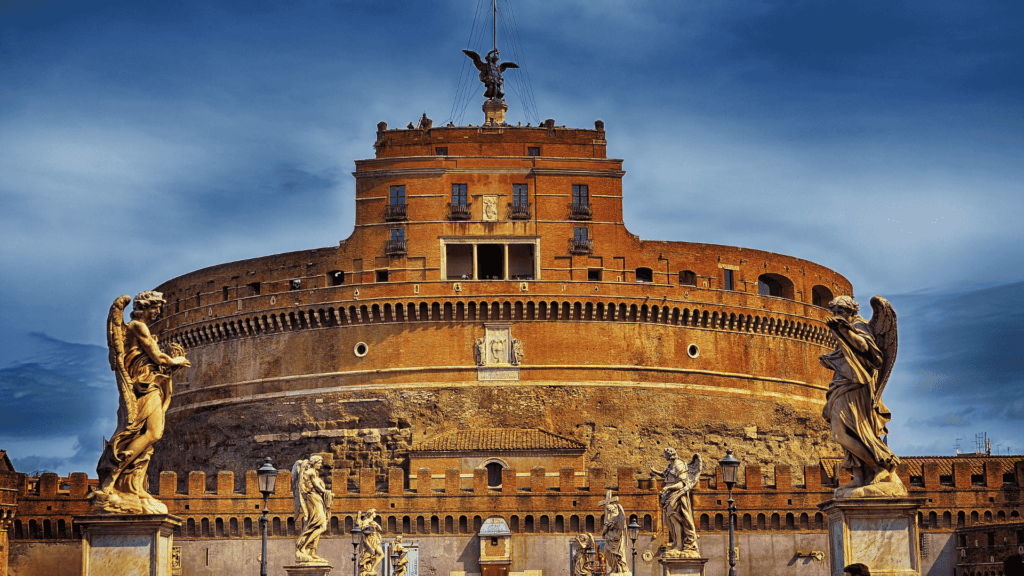
18. Castel Sant’Angelo, Rome
Originally built as a mausoleum for Emperor Hadrian, Castel Sant’Angelo has a rich history as a fortress, prison, and military barracks.
Located on the banks of the Tiber River, it now serves as a museum and houses the tombs of popes.
The castle offers a fascinating journey into the history of the Catholic Church and Rome itself. Its impressive architecture, statues by renowned artists, and panoramic views from the top make it a must-visit for history enthusiasts and amateur photographers.
The five floors of the castle, connected by a spiral ramp, display historic tombs, Renaissance artwork, and a vast collection of ancient weapons, allowing visitors to step back in time from the Middle Ages to Ancient Rome.
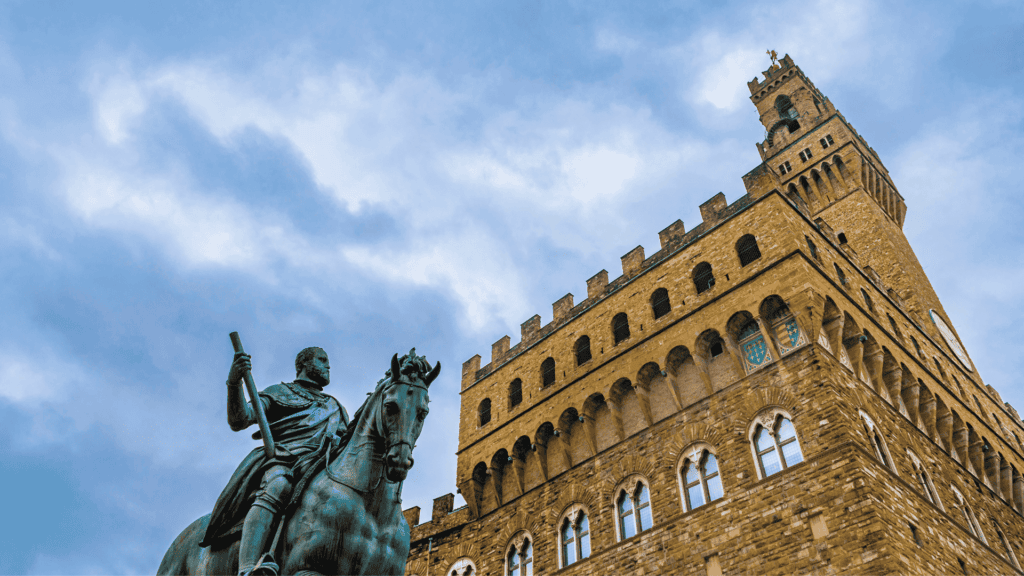
19. Palazzo Vecchio, Florence
The Palazzo Vecchio, also known as the Old Palace, is a historic city hall in the heart of Florence. Its architecture and style date back to the 13th century and have remained remarkably beautiful.
The construction of the Palace began in 1299 under the guidance of architect Arnolfo di Cambio and was completed twenty-three years later.
Standing tall at ninety-four metres is the impressive bell tower, named Torre d’Arnolfo after its architect.
Originally called the Palazzo del Popolo, the Palace underwent several name changes, including Palazzo della Signoria and Palazzo Ducale, before being known as the Palazzo Vecchio or Old Palace. It served as the primary residence of the Duke during the 16th century until he moved to the Palazzo Pitti.
The Palazzo Vecchio is a must-see landmark for anyone visiting Florence, showcasing the city’s rich history and architectural marvels.
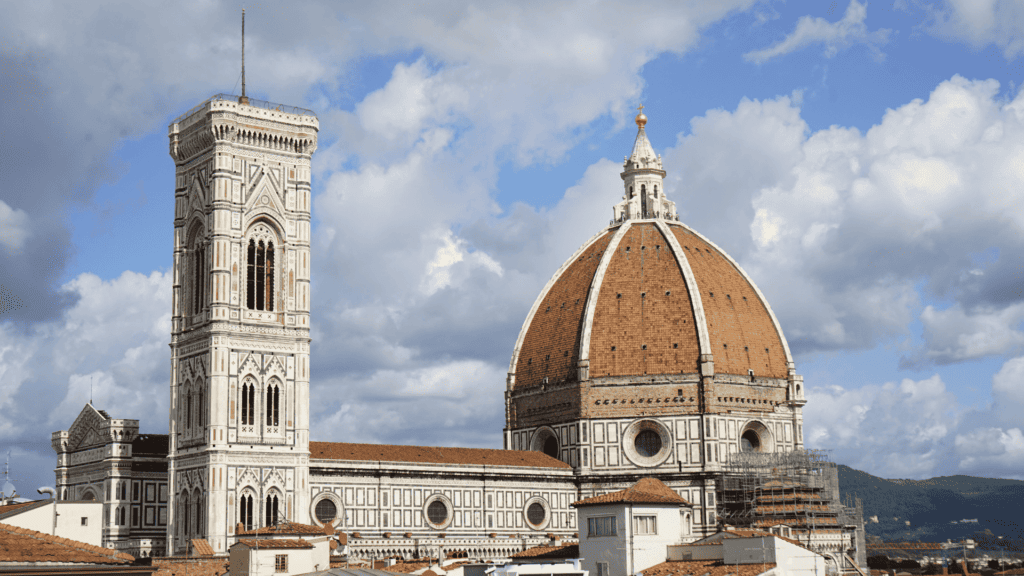
20. Santa Maria del Fiore, Florence
Santa Maria del Fiore, also known as The Duomo, is a famous cathedral in Florence that stands out in the city’s skyline.
Not only is it renowned for its size and beauty, but it also holds a rich history and is considered a groundbreaking architectural masterpiece.
The idea to construct this grand cathedral was conceived in 1293, long before the Renaissance period, by a committee with ambitious plans.
Despite the lack of technology to complete the dome, construction began anyway. The dome’s roof was exposed for years, resulting in a lengthy construction process lasting over 140 years.
Today, the cathedral stands as a testament to human ingenuity and craftsmanship. With its impressive dimensions, including over four million bricks, weighing over 40,000 tons, and almost half a football field at the base, it holds the title of the largest masonry structure in the world.
Its awe-inspiring presence today gives us a glimpse of the wonder it must have inspired in people during its construction when such technology was unimaginable.
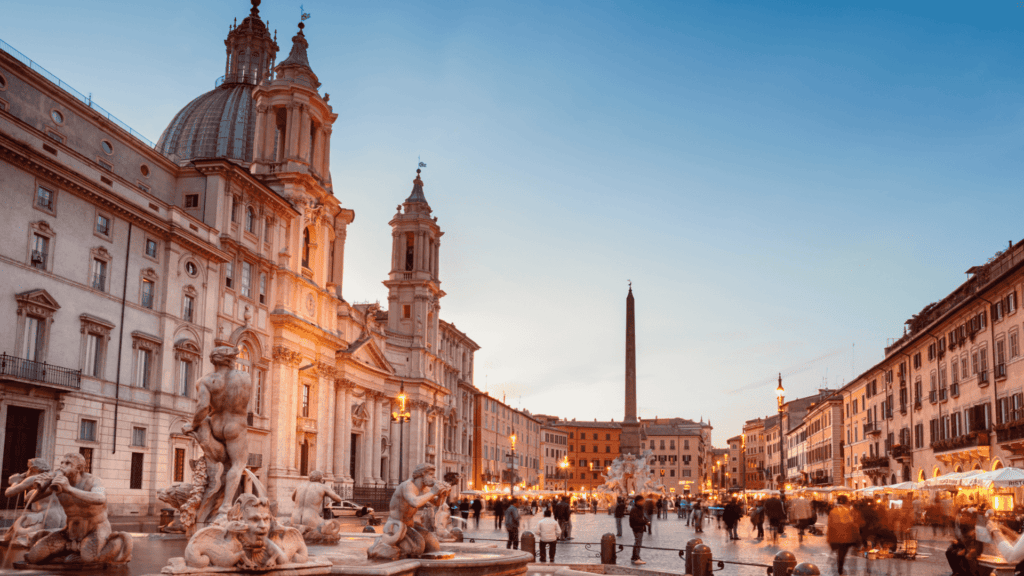
21. Piazza Navona, Rome
Piazza Navona is another must-see landmark in Rome. This bustling square is known for its stunning Baroque architecture and lively atmosphere.
The centrepiece of Piazza Navona is the Fountain of the Four Rivers, designed by the renowned sculptor Gian Lorenzo Bernini.
Surrounding the square are charming cafes, restaurants, and shops, making it the perfect place to relax and soak up the vibrant atmosphere of Rome.
Piazza Navona is a true gem of the city and a favourite spot for locals and tourists alike.
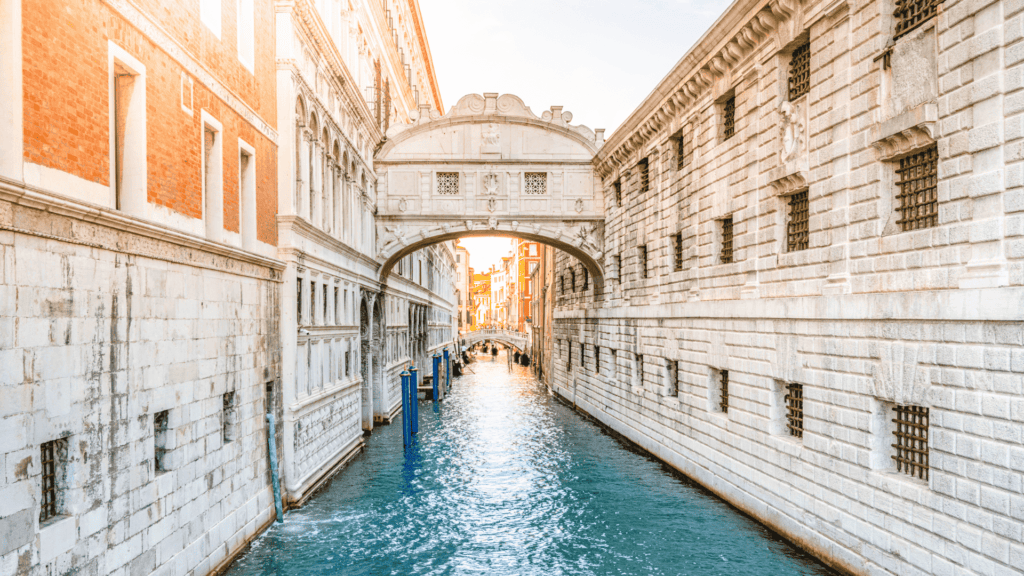
22. Bridge of Sighs, Venice
The Bridge of Sighs is one of the most iconic landmarks in Venice. This beautiful bridge connects the Doge’s Palace to the Prisons and is known for its unique design and romantic atmosphere.
Legend says that if two lovers kiss under the bridge at sunset, they will be granted eternal love and happiness.
The Bridge of Sighs gets its name from the sighs of prisoners passing through it on their way to the prison cells. Today, it is a popular spot for tourists to take photos and enjoy the stunning views of the city’s canals.
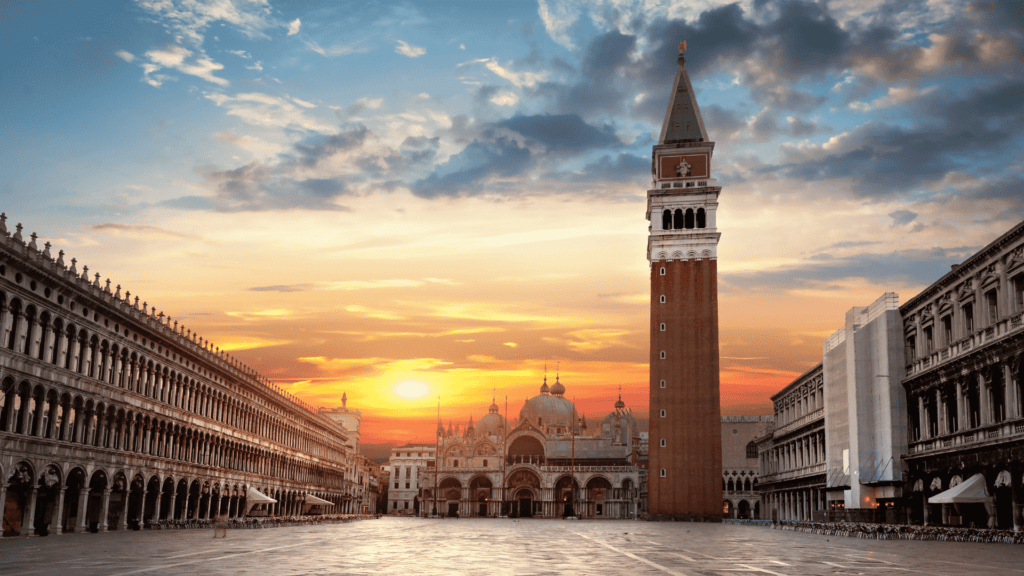
23. Piazza San Marco (St Mark’s Square), Venice
Piazza San Marco, also known as St. Mark’s Square, is the central public square in Venice and is considered one of the most beautiful in the world. It is surrounded by stunning architecture, including St. Mark’s Basilica and the Doge’s Palace.
The square is a hub of activity, with cafes, shops, and street performers entertaining visitors while offering a glimpse into the city’s rich history and culture.
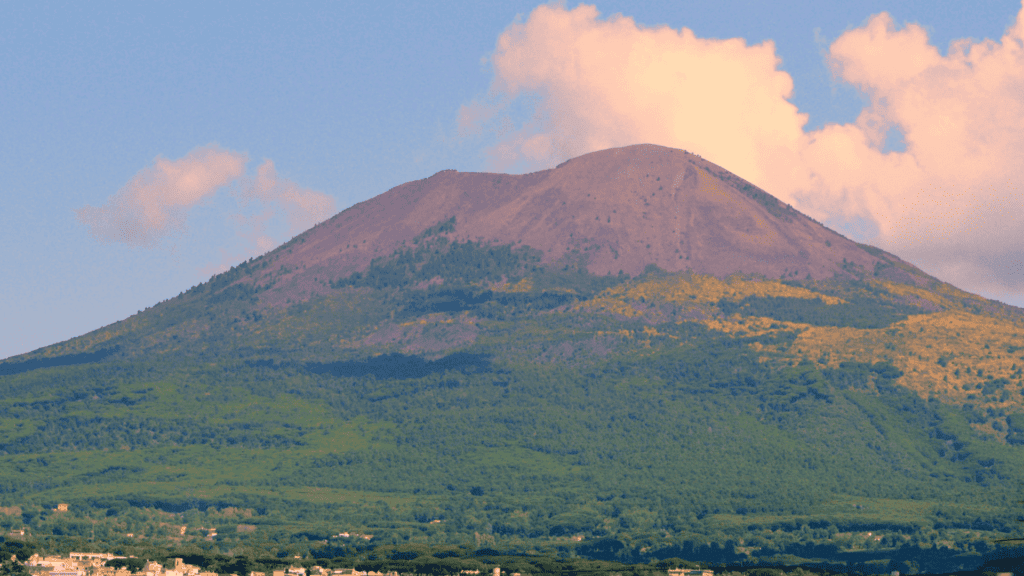
24. Mount Vesuvius, Naples
Mount Vesuvius, located near Naples, Italy, is a world-renowned landmark. The volcano is famous for its eruption in 79 AD, which destroyed the ancient city of Pompeii.
Today, tourists can hike to the summit of Mount Vesuvius and enjoy the stunning views of the surrounding area. Although the volcano is still active, it is closely monitored to ensure visitors’ safety.
Exploring Mount Vesuvius is an exceptional and unforgettable experience that lets you witness the power and beauty of nature while getting up close to one of Italy’s most iconic sights.
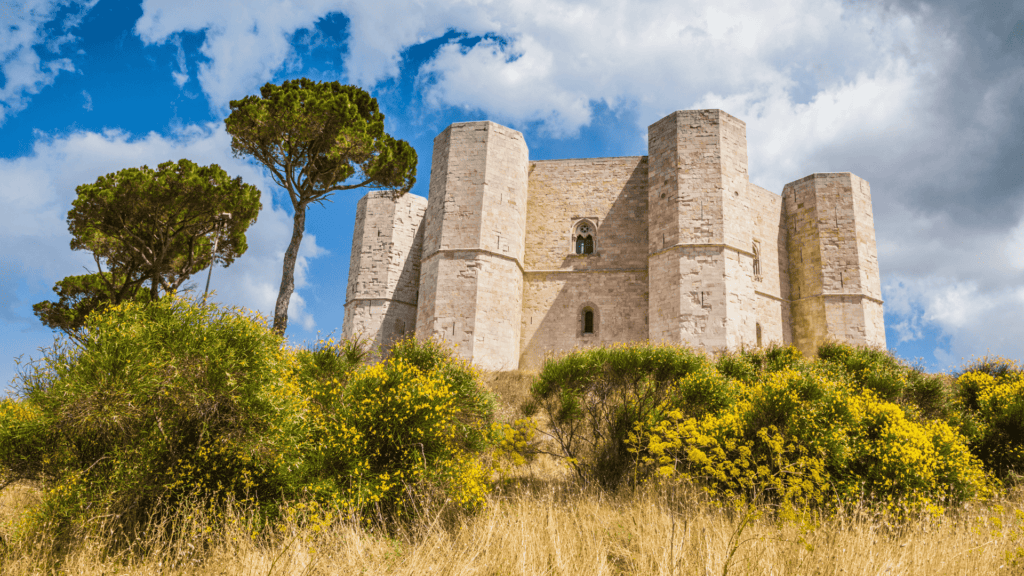
25. Castel del Monte, Apulia
Castel del Monte is a stunning medieval castle located in Apulia, Italy. Built in the 13th century by Emperor Frederick II, this UNESCO World Heritage Site is known for its unique octagonal shape and impressive architecture. The castle sits atop a hill, offering panoramic views of the surrounding countryside.
Visitors can explore the castle’s interior, which features beautifully decorated rooms and intricate details. Whether you’re a history buff or appreciate beautiful architecture, visiting Castel del Monte is a must when exploring Italy’s top landmarks.
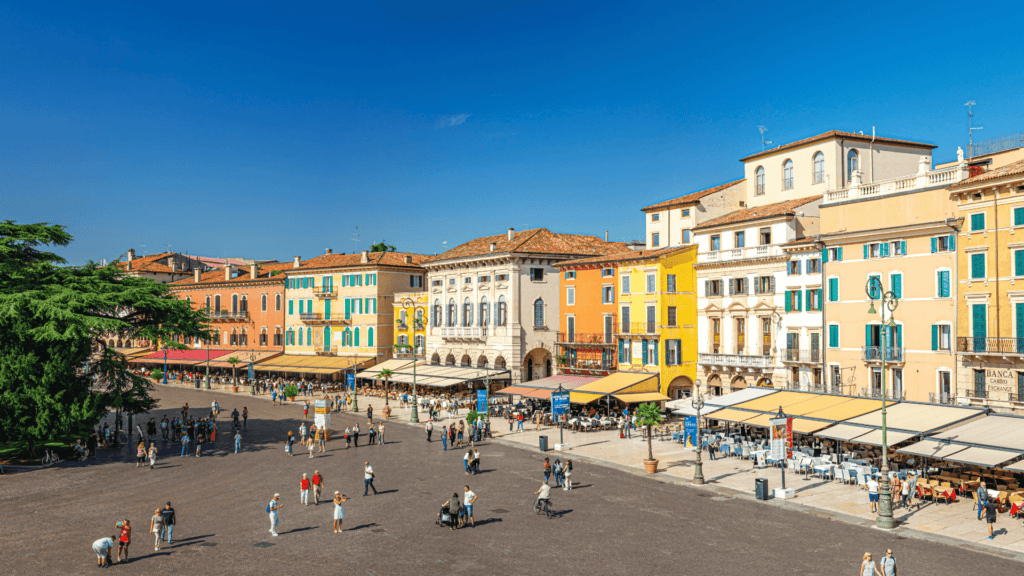
26. Piazza Bra, Verona
Piazza Bra is the largest city square in Verona, home to several historical buildings such as the Verona Amphitheater, City Hall and the Palace of Gran Guardia. Initially, it served as the arrival place before entering the city, and it has a rich history.
The ancient amphitheatre, built in the 1st century, can seat up to 22,000 people. The Palace of Gran Guardia, constructed in 1610, was the first building to be erected on the southern edge of the square.
Surrounded by numerous cafes and restaurants, Piazza Bra is a popular spot for locals and tourists. Visitors can enjoy admiring the statue of Victor Emanuel II on horseback, the balcony where Garibaldi gave his famous speech, and the stone carvings of saints. The square is also a popular venue for public events and concerts, having featured world-famous musicians such as Pink Floyd, Rod Stewart, and Elton John.
Whether exploring the historical sites, admiring the architecture, or enjoying a drink or meal, Piazza Bra offers a perfect blend of history and modernity.
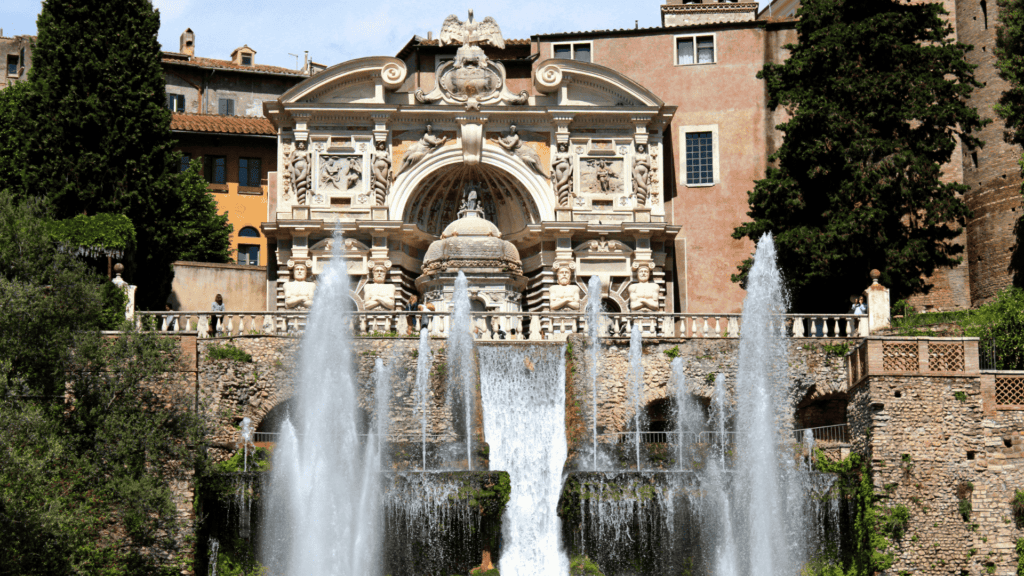
27. Villa d’Este, Tivoli
Villa d’Este is a magnificent Renaissance villa located in Tivoli, Italy. It is renowned for its stunning gardens, elaborate fountains, and breathtaking views.
The villa was built in the 16th century for Cardinal Ippolito II d’Este and is now a UNESCO World Heritage site. The gardens of Villa d’Este are considered one of the finest examples of Italian Renaissance garden design, with terraces, water features, and meticulously manicured greenery.
Visitors can explore the villa’s opulent interior, adorned with frescoes, sculptures, and intricate decorations. Visiting Villa d’Este is a truly unforgettable experience for anyone visiting Italy.
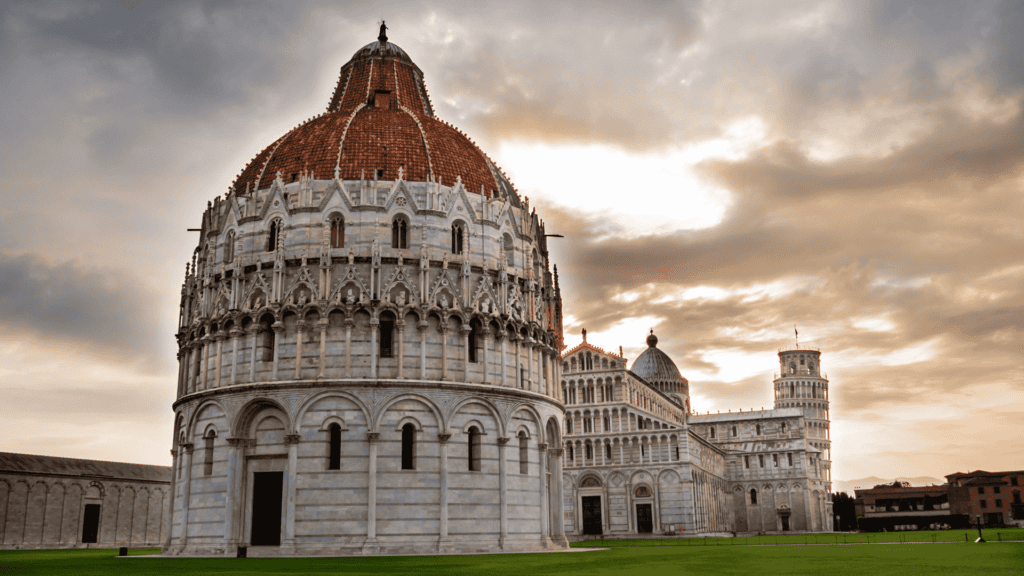
28. Piazza dei Miracoli, Pisa
Piazza dei Miracoli, also known as the Square of Miracles, is a famous landmark in Pisa. This UNESCO World Heritage site is home to some of the most iconic structures in the country, including the world-renowned Leaning Tower of Pisa.
The square draws millions of visitors each year, who come to admire not only the Leaning Tower but also the Pisa Cathedral, the Pisa Baptistry, and the Camposanto Monumentale. The architecture and history of these buildings are truly awe-inspiring, and a visit to Piazza dei Miracoli is a must for anyone travelling to Italy.
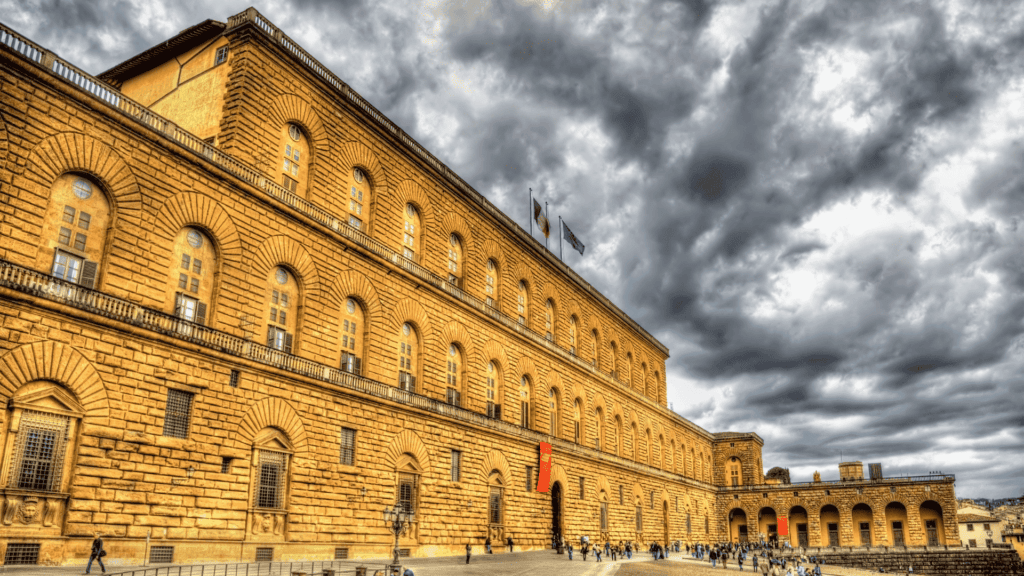
29. Palazzo Pitti, Florence
Palazzo Pitti is a majestic palace in the heart of Florence, Italy. The construction of this imposing and austere building was initiated in 1458 by the Florentine banker Luca Pitti (1398–1472), a significant supporter and close friend of Cosimo de’ Medici. Later on, it served as the residence of the influential Medici family.
Today, the Palace houses several museums and galleries, including the Palatine Gallery, which exhibits a remarkable Renaissance art collection.
Visitors can explore the lavish rooms and exquisite gardens and even glimpse the famous Boboli Gardens from the Palace’s windows. Palazzo Pitti is a must-see attraction for art fans and history enthusiasts alike.
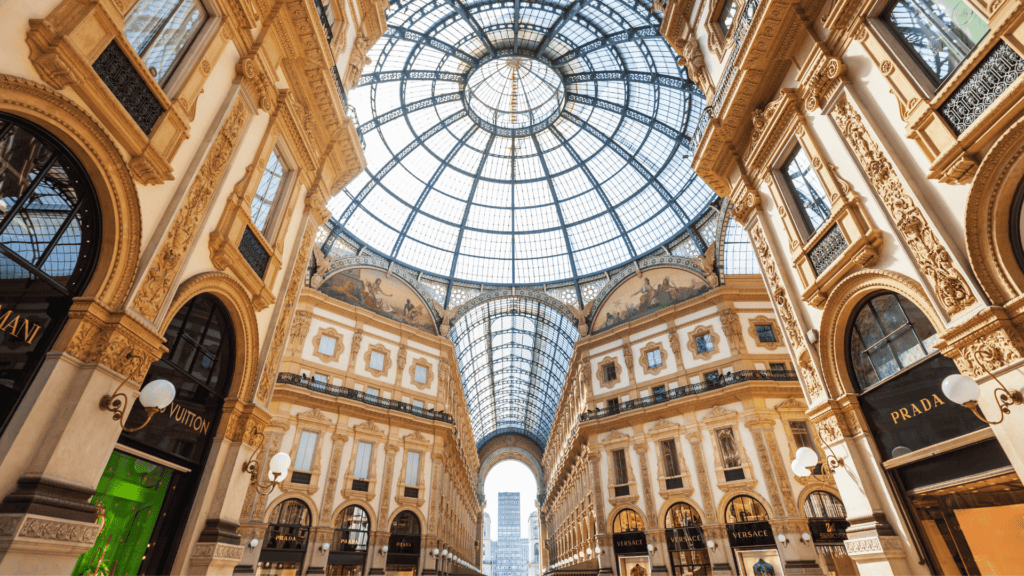
30. Galleria Vittorio Emanuele II, Milan
The Galleria Vittorio Emanuele II is a breathtaking shopping arcade in the heart of Milan, Italy. Constructed in the late 19th century, it is one of the oldest shopping malls in the world and a true masterpiece in terms of architecture.
The arcade is named after Vittorio Emanuele II, the first king of Italy, and is renowned for its stunning glass roof and intricate ironwork. The interior of the arcade houses a variety of high-end boutiques, cafes, and restaurants.
It’s a must-visit destination for fashion enthusiasts, as it is home to the famous Prada flagship store. However, even if you are not into fashion, it is still worth visiting to appreciate the stunning architecture of the Galleria Vittorio Emanuele II.
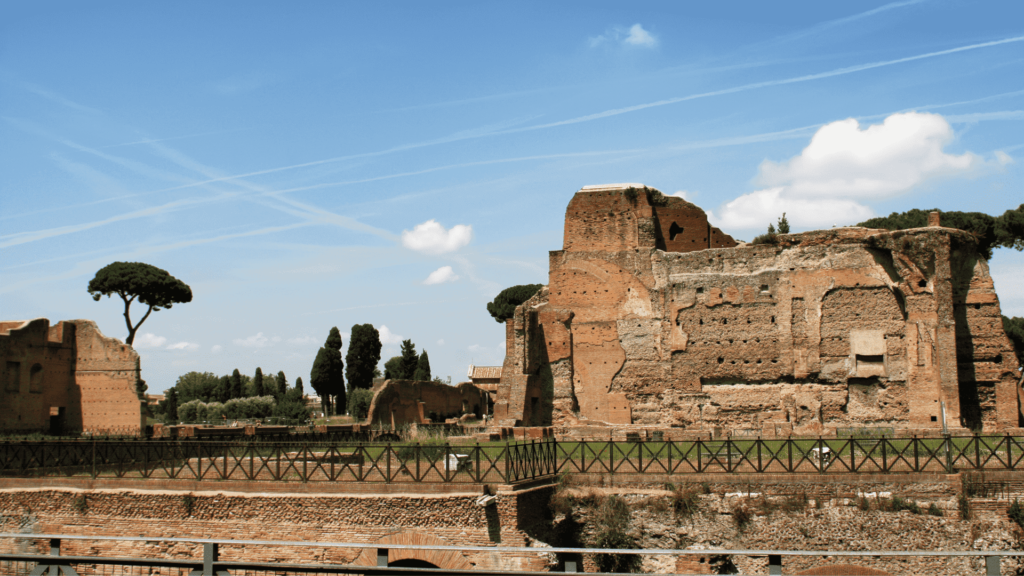
31. Palatine Hill, Rome
Palatine Hill, located in the city’s centre, is one of the most important archaeological sites in Rome and a must-visit landmark for history buffs. It is one of the seven hills of Rome and is believed to be the birthplace of the city itself.
According to legend, it was on Palatine Hill that Romulus founded Rome in 753 BC. Today, visitors can explore the ruins of ancient palaces, temples, and gardens that once adorned the hill.
Highlights include the House of Augustus, the House of Livia, and the Domus Flavia. The hill also offers breathtaking views of the Roman Forum and the Colosseum. Take the chance to step back in time and discover the rich history of Palatine Hill during your visit to Rome.
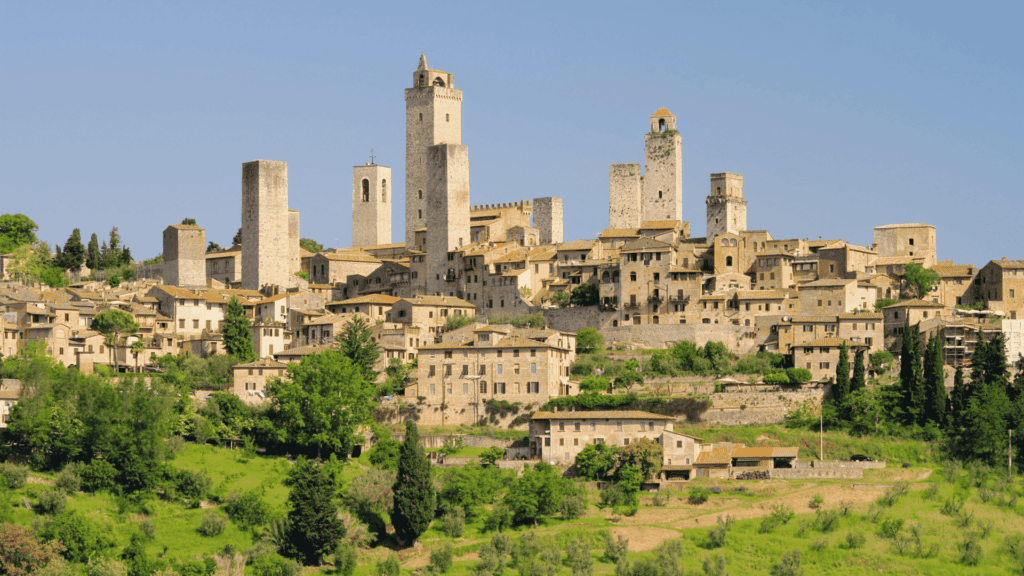
32. San Gimignano, Tuscany
San Gimignano is a charming, small medieval town in the heart of Tuscany, is well-known for its iconic skyline composed of medieval towers. It is a UNESCO World Heritage Site and a popular tourist destination.
San Gimignano boasts well-preserved medieval architecture, including 14 towers that remain out of the original 72. Visitors can explore the narrow streets and alleys, visit the town’s museums and art galleries, and enjoy panoramic views of the surrounding countryside from the top of the towers.
Don’t forget to try the local specialty, Vernaccia di San Gimignano, a white wine produced in the area. A visit to San Gimignano will make you feel like you have stepped back in time and experienced the charm and beauty of medieval Italy.
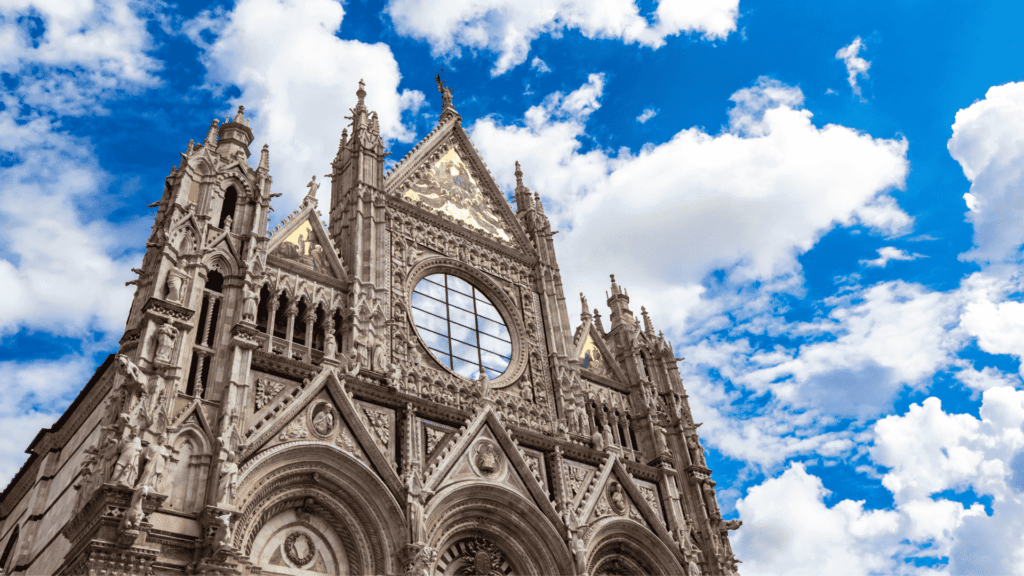
33. Siena Cathedral, Siena
Siena Cathedral, also known as the Cathedral of Santa Maria Assunta, is an excellent example of Italian Gothic architecture situated in the city of Siena, Italy.
The cathedral is famous for its intricate facade, decorated with sculptures and other decorative elements, as well as its grand interior. Visitors can admire the well-known mosaic floor inside the cathedral, which portrays biblical scenes and allegorical figures, along with the Piccolomini Library, featuring beautiful frescoes by Pinturicchio.
The main attraction of the cathedral is the pulpit created by Nicola Pisano, which is considered a masterpiece of medieval sculpture. Visiting Siena Cathedral is a must for anyone interested in art, history, and architecture. It provides a unique glimpse into the rich cultural heritage of Italy.
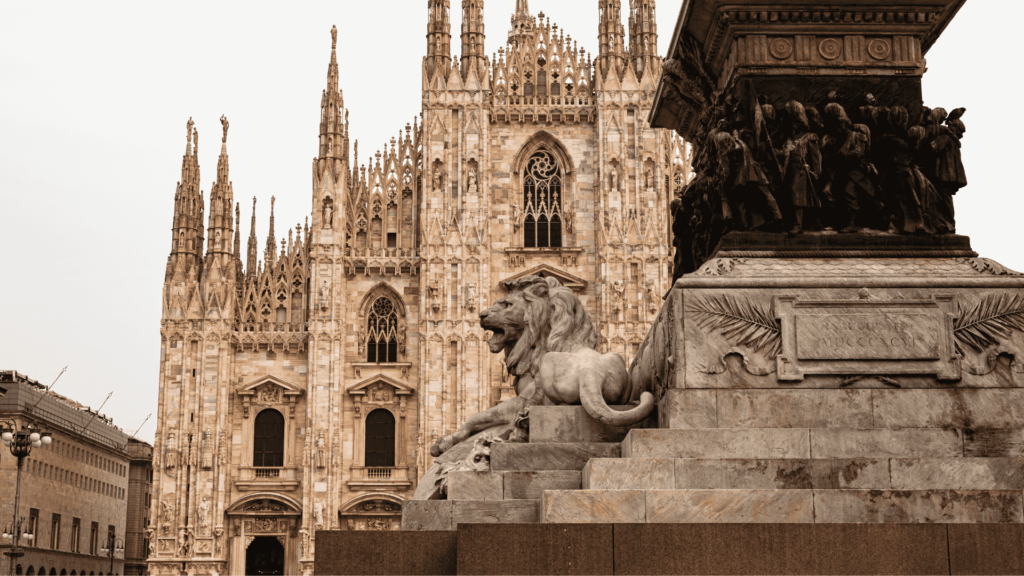
34. Piazza del Duomo, Milan
Piazza del Duomo in Milan is a magnificent square with several famous landmarks. The most notable of these landmarks is the Duomo Cathedral, a stunning architectural masterpiece. Flanking the square are the Galleria Vittorio Emanuele II, a historic shopping arcade, and the Palazzo Reale, an elegant 18th-century palace.
Besides the historical buildings, the Piazza also features the modern twin buildings of the Arengario, which were constructed during the Fascist era. This blend of old and new creates a unique atmosphere in the square.
The Piazza has a long history, dating back to the 14th century when Azzone Visconti, the lord of Milan, expanded it. It has undergone numerous renovations and redesigns over the centuries, eventually becoming the bustling hub it is today. A statue of King Vittorio Emanuele II of Italy now stands as the dominant feature of the square.
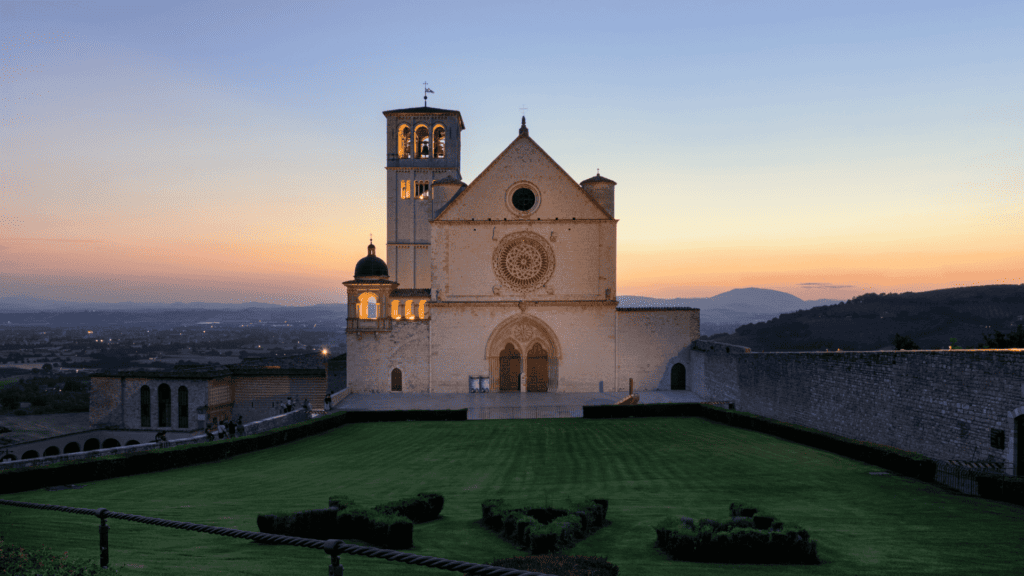
35. Basilica di San Francesco, Assisi
The Basilica di San Francesco in Assisi is a magnificent complex comprising two churches: the Gothic Basilica Superiore and the older Basilica Inferiore.
The Basilica Superiore boasts a cycle of frescoes by Giotto depicting the life of St Francis, considered one of Italy’s most famous works of art due to their vibrant and colourful nature.
On the other hand, the Basilica Inferiore is a Romanesque church decorated with frescoes by Giotto, Cimabue, Lorenzetti, and Martini. One of the highlights of this church is the set of vault frescoes above the main altar, attributed to Giotto and his collaborators.
Visitors can explore the basilica with the help of an audio guide available at the information office in front of the lower church. Guided tours led by a resident Franciscan friar can also be arranged for groups of 10 or more.
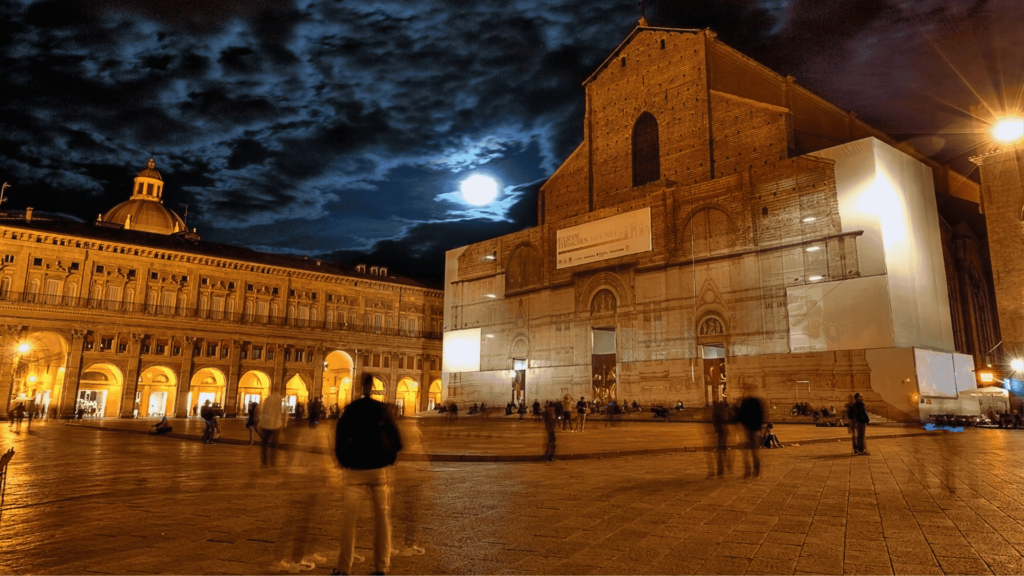
36. Piazza Maggiore, Bologna
Piazza Maggiore is the central square of Bologna, with a rich history dating back to the 13th century.
Over the centuries, essential buildings such as the Basilica of San Petronio, the Palazzo dei Notai, the Palazzo d’Accursio, the Palazzo del Podestà, and the Palazzo dei Banchi were added to the square, making it a symbol of the city’s municipal institution and a hub for various activities such as trade and services.
Although the square was officially named Piazza Maggiore in the 16th century, it was attributed to the name of King Vittorio Emanuele II of Italy after the expulsion of the Austrians.
It was not until 1945 that the square and its surrounding area were officially recognised as Piazza Maggiore. Today, Piazza Maggiore remains a vibrant and historic gathering place in Bologna.
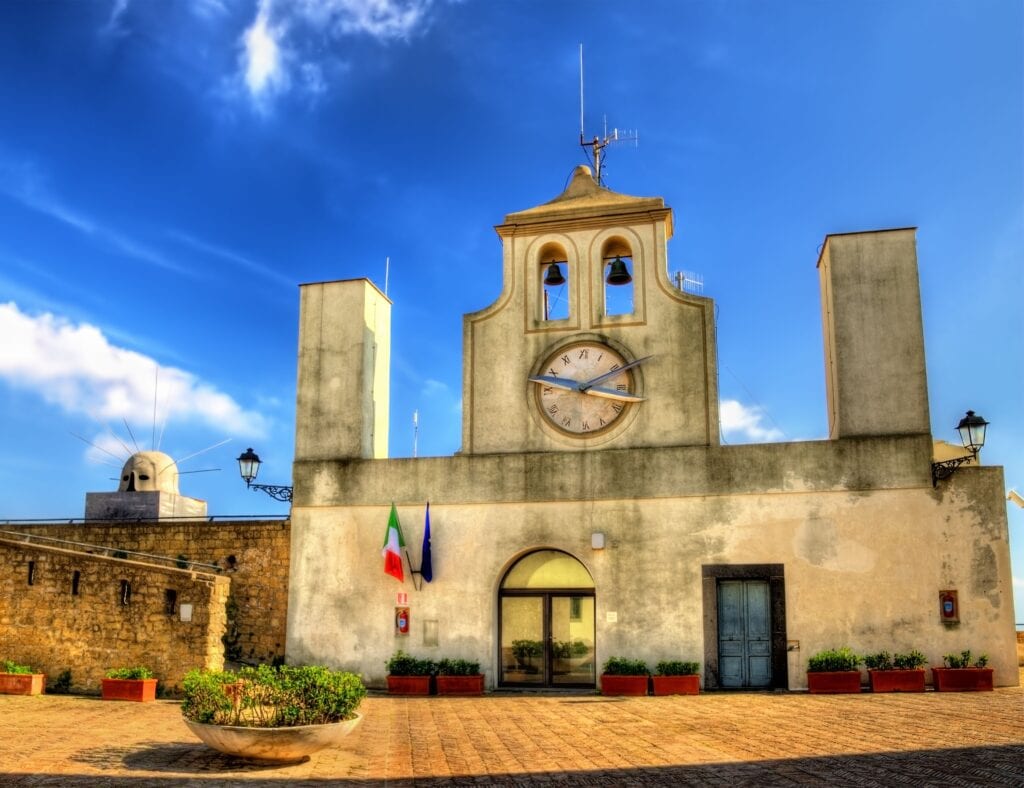
37. Castel Sant’Elmo, Naples
Located on the Vomero hill in Naples, Castel Sant’Elmo is a castle with medieval origins. Originally a church dedicated to St Erasmus, it was later converted into a castle by Robert of Anjou in 1349 and further fortified by Spanish viceroy Don Pedro de Toledo in 1538.
Throughout history, the castle served as a military prison until the 1970s. Today, it is famous for its stunning panoramic views of the city, bay, islands, and beyond. Additionally, it houses the Museo del Novecento, which showcases 20th-century Neapolitan art, including influential movements like Futurism and Nuclear Art.
When you explore this list of remarkable iconic landmarks found in Italy, it is truly astounding to see the abundance of history that can be found in a single country.
Whether you are a history enthusiast, an art lover, or simply someone who appreciates stunning architecture, we hope that our guide to some of Italy’s must-see landmarks has inspired you to embark on an exhilarating journey to experience the country’s incredible history and culture, as well as some of its most stunning natural attractions.
Read more: Spain’s Iconic Landmarks
Be sure to read our comprehensive travel guide to Italy and, if you are considering adding more wonderful European travel destinations to your vacation, check out our guide to the best places in Europe for a couple’s getaway. For those seeking off-the-beaten-path destinations and a break from the tourist crowds, these lesser-known European gems provide a unique and authentic travel experience that has yet to be fully overrun by travellers.
